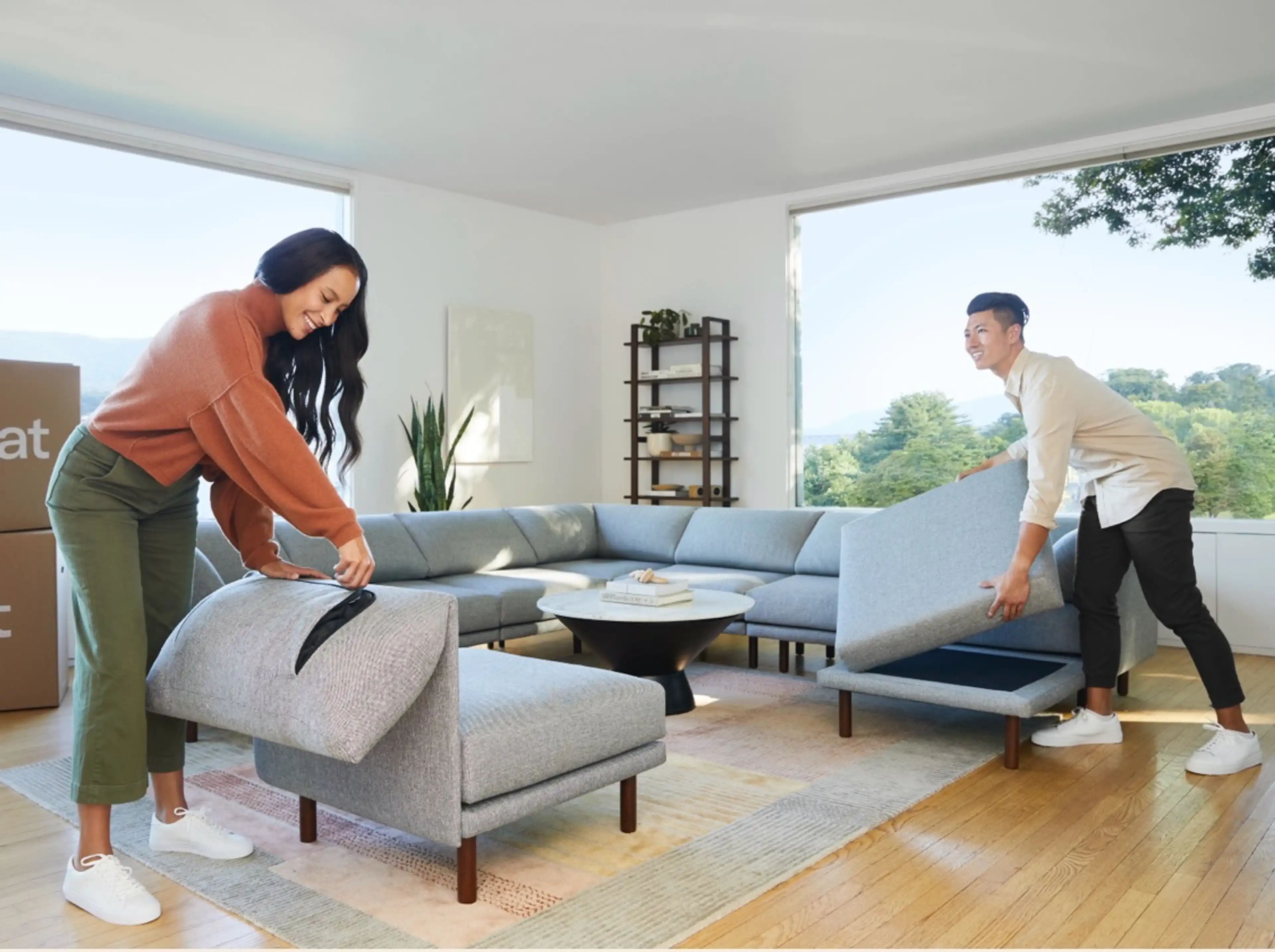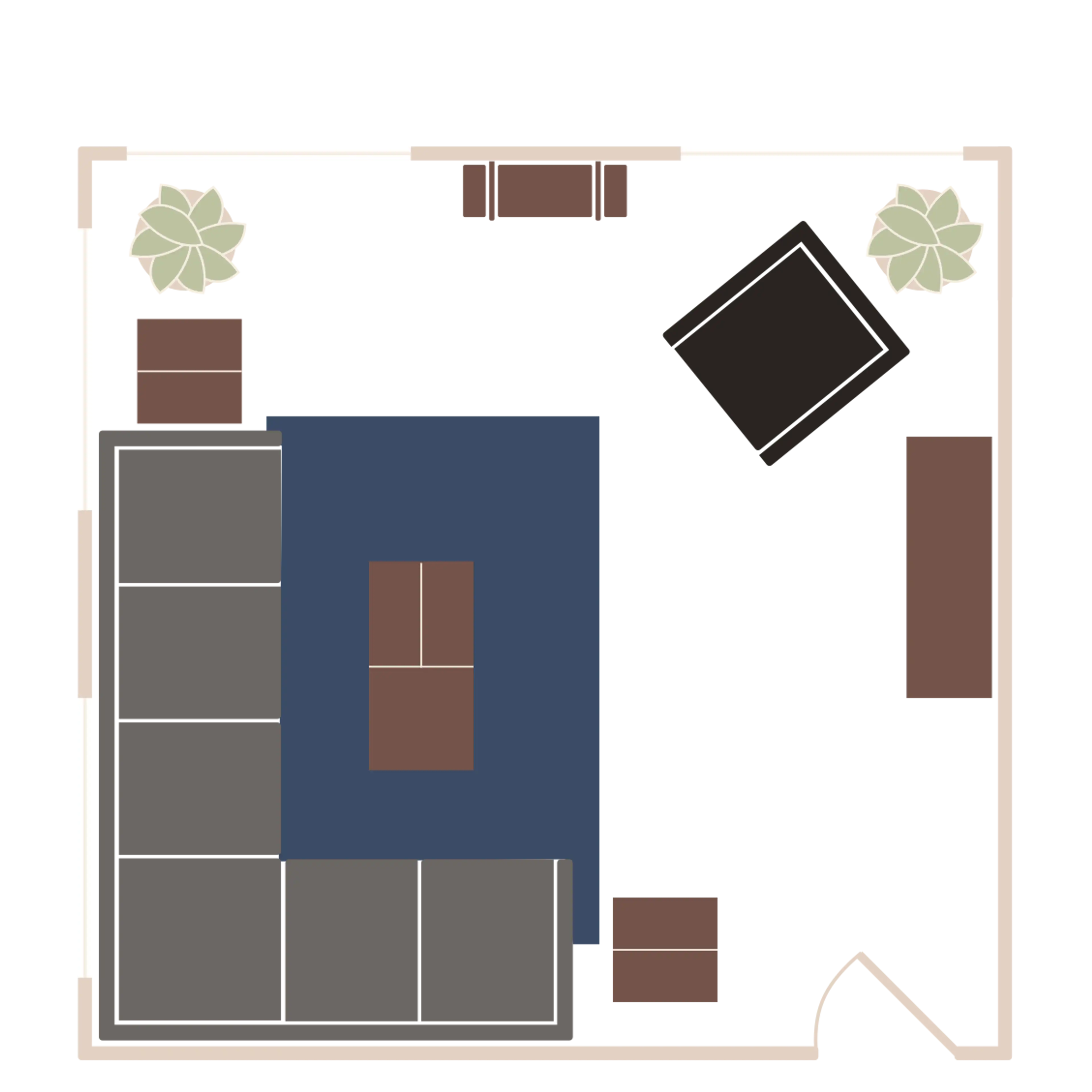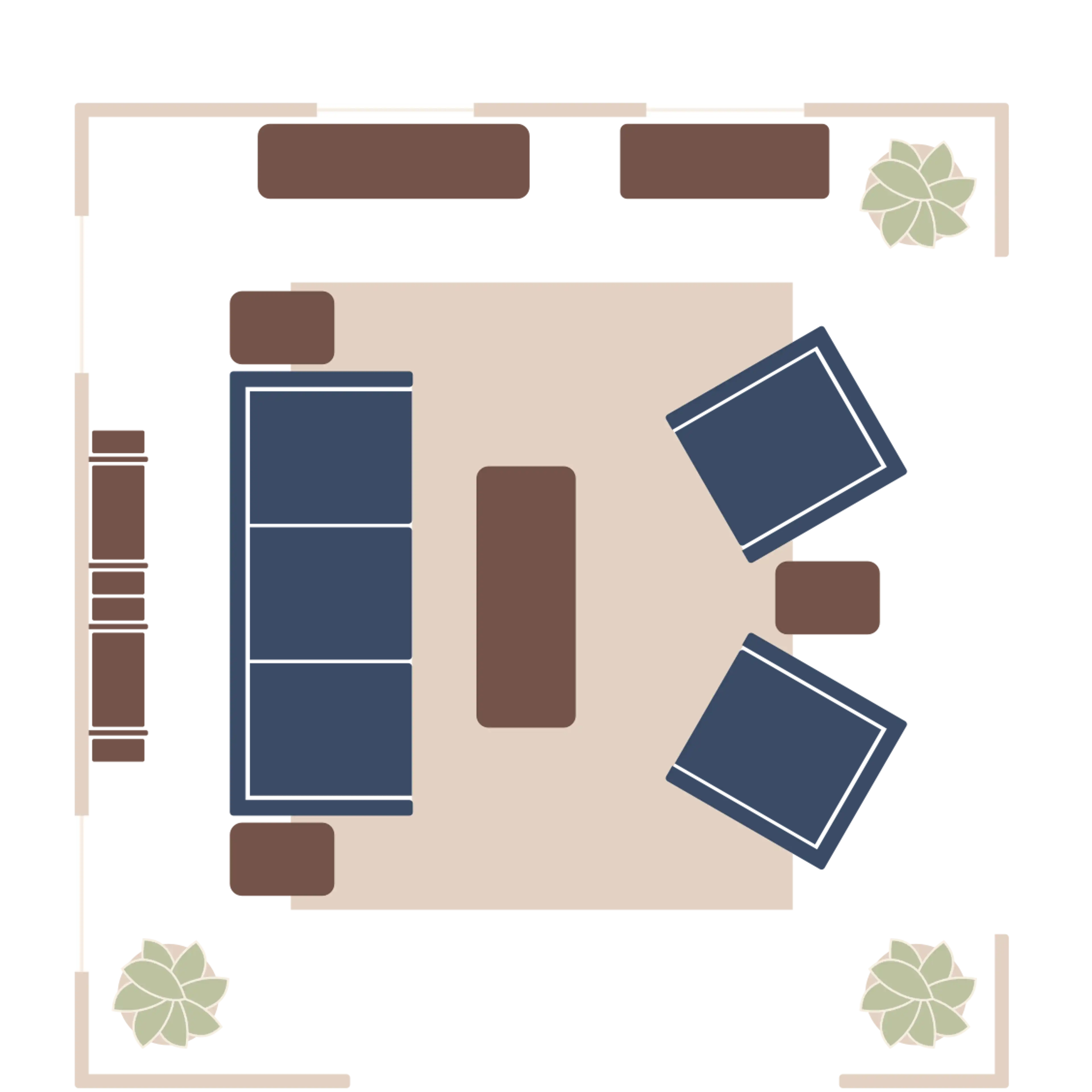A Crash Course in Arranging Furniture | Burrow
Cart
0 items
Your cart is currently empty
Stories, updates, and interviews from Burrow

A Crash Course in Arranging Furniture
There are a few myths we need to dispel off the bat. First: that learning how to arrange furniture is an innate, unlearnable skill. Second: you have to hire a professional if you want it done right. Last: a magic wand is required. Finding a harmonious living room layout is not magic, you do not need to hire an expensive interior decorator, and you — yes, you! — are capable of making it look either like magic or an expensive professional job, all by yourself.
Okay, now that we’ve cleared up what’s not true, let’s talk about what is. Everyone — yes, even the team here at Burrow — must approach furniture arrangement with a bit of curiosity. In other words, your first try isn’t always your best try. But before you pull a muscle moving your sofa a thousand times, let’s take a look at some of the general rules for creating good flow. The easiest way to do that is to study common living room layouts.
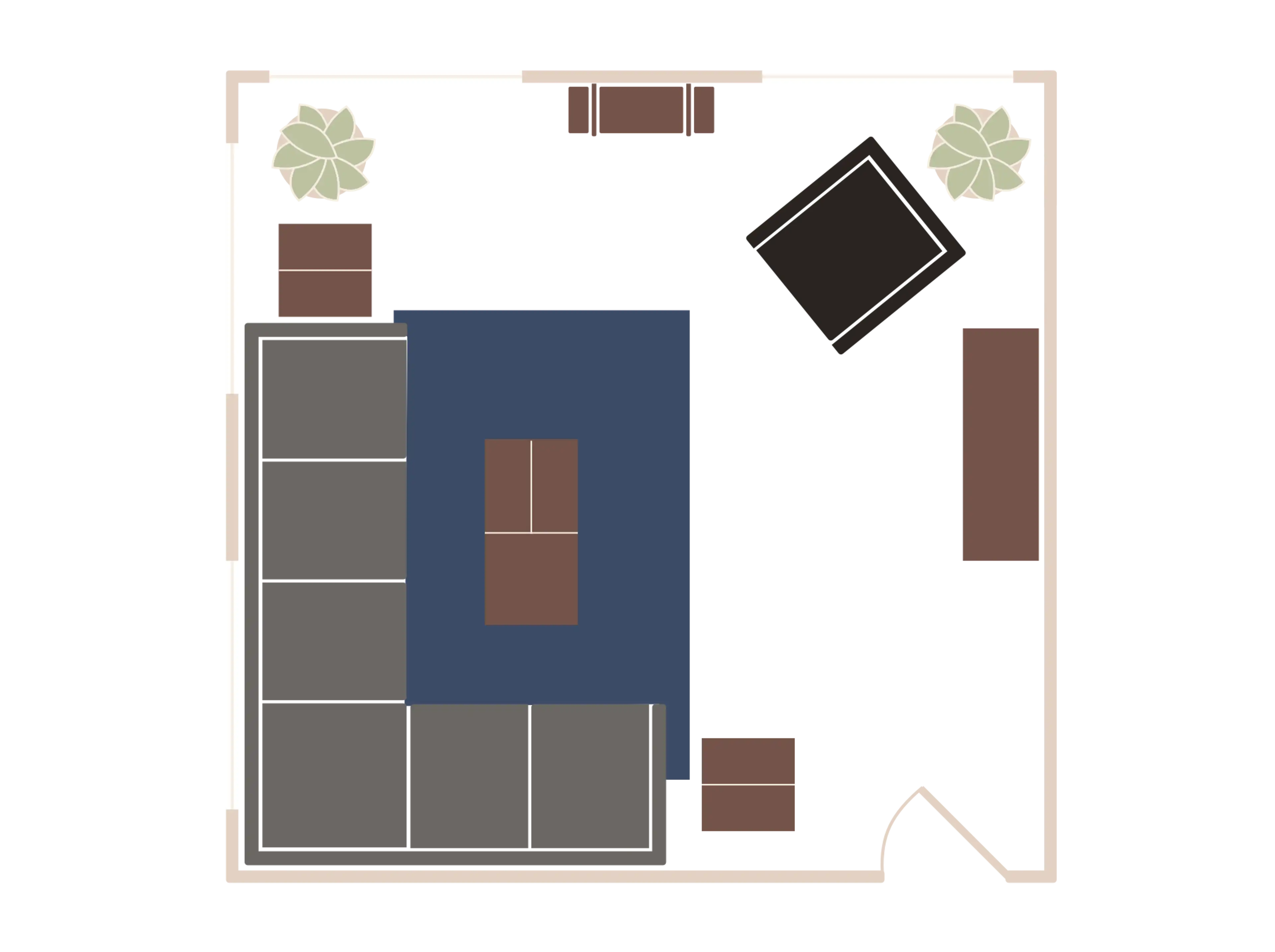
Lesson 1: The feature presentation
If every night is movie night in your house, you’re a prime candidate for the home theater layout. The upside of this arrangement? Every seat is a “good” seat and no one has to suffer a neck injury. Setting it up is pretty simple. Place your sofa or sectional so that it directly faces your TV or media console. From there, focus on your supporting roles: popcorn and soda. A good home theater has enough table space for snacks. We like to slide a coffee table in front of the sofa, then add a couple of side tables.
Now that we’ve nailed down an all-star cast, we’ll need to evaluate how much space remains. If things are feeling too open — especially on one side — add an armchair. Not enough room? Be more efficient with your space by adding an ottoman or chaise. These pieces are perfectly happy hanging out in the limelight until a guest pops over.
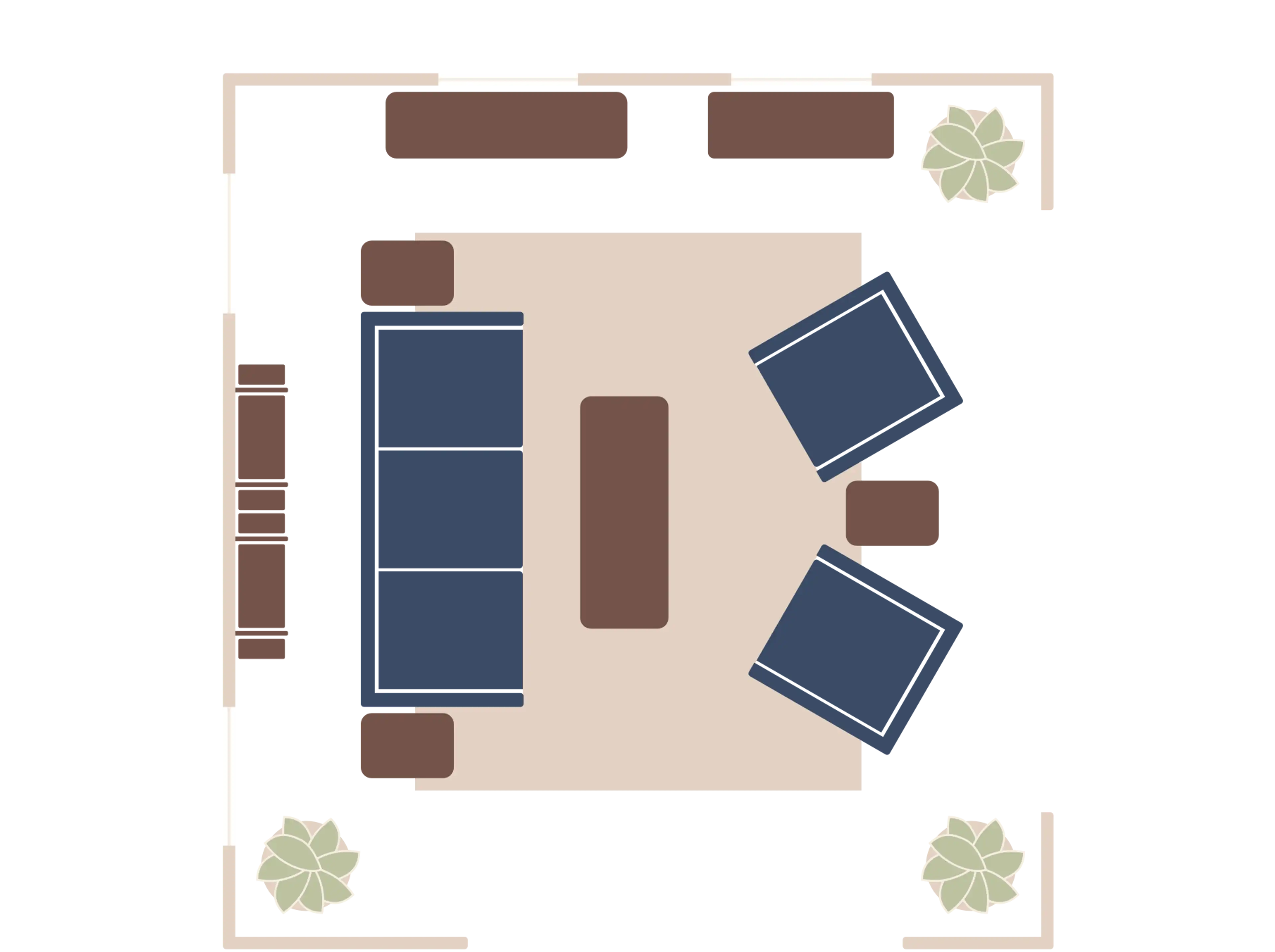
Lesson 2: Start a conversation
Maybe you’re just not a TV person. Maybe in your house, conversation is king. If that’s the case, there’s less of a need to consider the media area. Instead, you’ll want your seating to unlock great discussion. Do this by arranging seats across from, well, other seats. A simple trick is to put two lounge chairs across from your sofa.
Now that we’ve got the seating sorted, let’s think about surfaces. In an ideal world, every guest would have a place to rest their drink without getting up (anything to keep the convo flowing!). We recommend a coffee table in the center and a nice smattering of side tables throughout — perhaps a Kettle Side Table in between your armchairs? If everyone has a designated spot for their cocktail and crudité, you’ve succeeded.
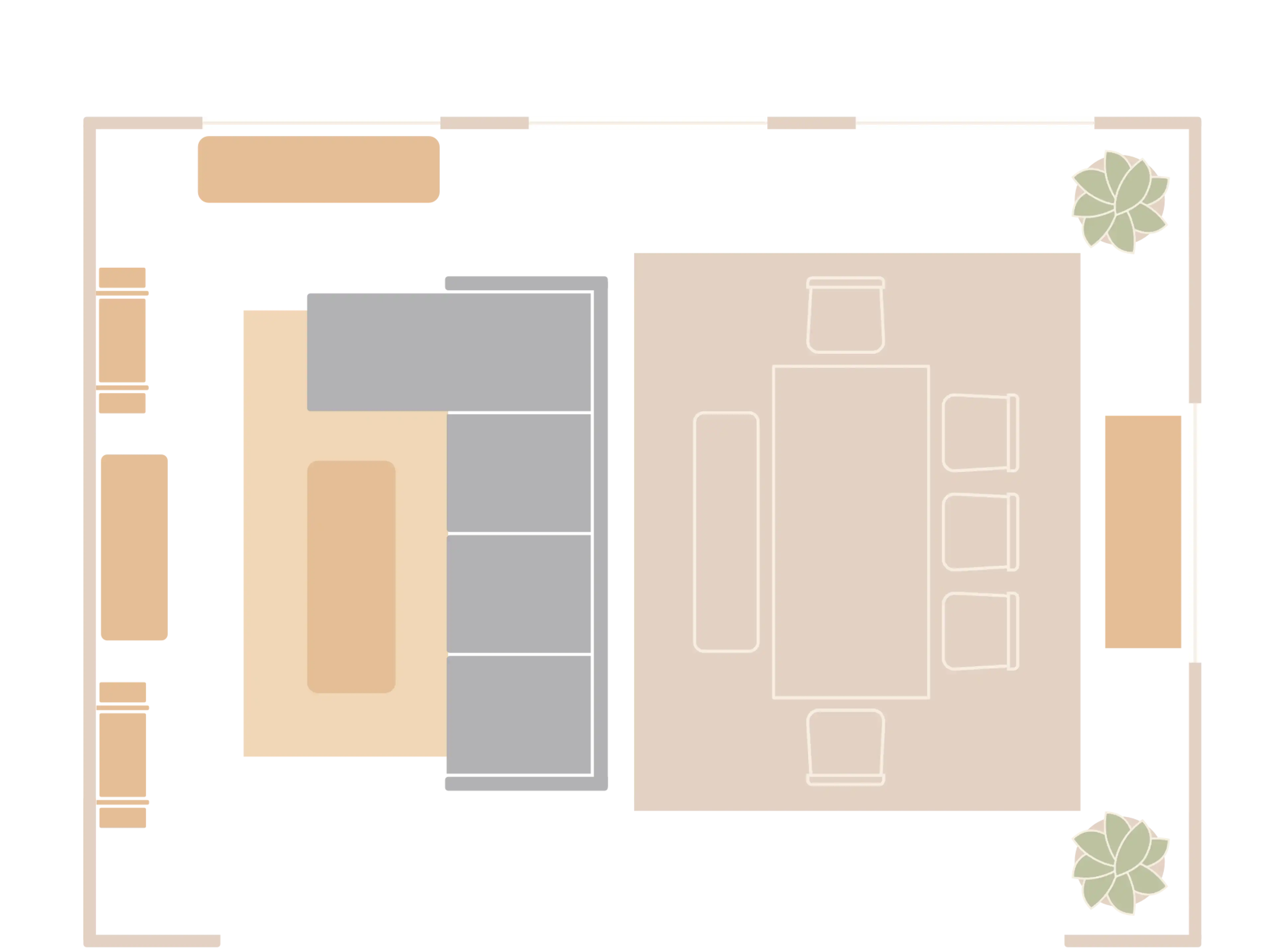
Lesson 3: Wide open spaces
So many houses and apartments these days have open floor plans. It sounds great on paper. It may have even sealed the deal when you toured your place. But filling an open space can be overwhelming.
Open floor plans aren’t as tricky as they seem. The key is, ironically enough, carving it up. You want to create visual breaks between each area. Here’s our golden rule for an open living space: split it down the middle with your couch. Another pro move is to “block” off areas using rugs. Once you’ve created the right visual perimeters, think about your primary use for the living space. You’ve got the know-how for creating either a home theater or conversation starter.

Lesson 4: Help is on the way
We’ve covered a lot of ground so far. Are you ready to take things into your own hands? It’s ok if you don’t feel 100% confident. Give us a call and we’ll help set things up based on your living room’s unique dimensions and shape.
